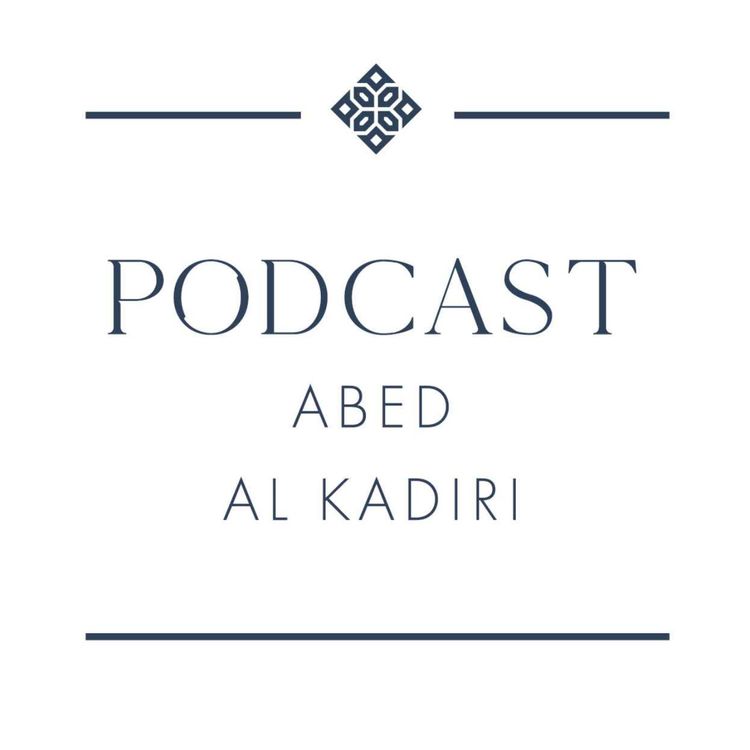Share

Fondation Boghossian Podcast
Abed Al Kadiri - How will it end ?
Abed Al Kadiri (Beirut, 1984), a multidisciplinary artist, majored in Arabic literature and Fine Arts at the Lebanese University. In 2006, he moved to Kuwait, where he worked as an art critic and as director of CAP Kuwait. He is the co-founder of Dongola Limited editions in Beirut. Working mainly with painting, Al Kadiri focuses, on themes such as cultural heritage, occupation, migration and belonging.
The exhibition shows two drawings as well as the in situ work ‘it’s not black or white’ conceived for the exhibition ‘How will it end?’. The mural entirely of charcoal is a charred landscape that awaits collective engagement. Using an eraser, the audience is invited to take part in a process of creation through destruction. They tackle the darkness, each with their own efforts, embodying an attempt to correct the paths and choices that we have taken. Whiteness starts to emerge and morph the surface, slowly, to reveal something altogether new.
More episodes
View all episodes

1. Louma Salamé - How will it end ?
10:48||Season 1, Ep. 1Louma Salamé (Lebanon, 1981), is director of the Boghossian Foundation (Brussels) and co-curator of the exhibition ‘How will it end?’ with Alicia Knock, urator for the Contemporary Art and Research department of the National Museum of Modern Art of the Centre Pompidou (Paris).
2. Gregory Buchakjian - How will it end ?
03:47||Season 1, Ep. 2With a PhD from the Sorbonne (Paris), Gregory Buchakjian (Beirut, 1971) is director of the School of Visual Arts at the Académie Libanaise des Beaux-Arts (ALBA). He lives and works in Beirut. Political instability and ruin are among the issues tackled by his doctoral dissertation at the University of Paris IV Sorbonne. His research and work revolve around issues of the city and history, in Beirut, Lebanon and the Arab world. The landscape in mourning and the destruction of public space are frequently explored in the work of Gregory Buchakjian who has long worked on abandoned settlements in Beirut. Besides human and material losses, the explosion was also of great consequence to cultural heritage, the Sursock palace for example was almost completely destroyed and 25 works of art were severely damaged: ‘Hercule et Omphale d’après Artemisia Gentileschi’ (2021) shows one of them.
4. Monica Basbous - How will it end ?
02:59||Season 1, Ep. 4Monica Basbous (Venezuela, 1988) is an architect, researcher, educator, as well as a cartographer. For the project shown at the Boghossian Foundation, she works with Charbel Alkhoury (Beirut, 1993) who is a visual artist, photographer and archivist. They both currently live and work in Beirut. The collective works with various media to explore the social fabrics of urban spaces. POPG Clanc (2021), originates from a WhatsApp group of the same name, originally created by a group of online gamers in the aftermath of the popular uprisings of October 2019, that evolved into a revolutionary cell, an information sharing and verification system, a mutual aid network and a social and emotional support system. Alkhoury and Basbous engaged the members of POPG Clanc in the process of archiving chat, presenting an alternative timeline of the collective and personal events that have shaped the past two years.
5. Chafa Ghaddar - How will it end ?
04:12||Season 1, Ep. 5Visual artist Chafa Ghaddar (Lebanon, 1986) earned her bachelor’s degree in Fine Arts in 2007, and her master’s degree in Visual Arts in 2009, both at the Académie Libanaise des Beaux Arts (ALBA). She currently lives and works in Dubai and received the prize for painting of the Boghossian Foundation in 2014. Her works include murals, paintings, drawings, photographs and pieces in mixed media. Following the explosion, Chafa Ghaddar felt a need to reconnect with nature, to dissociate herself from the city. This translates into the series of frescoes dedicated to the cacti in her garden. She explains that, from Dubai, ‘gardening hooks her back into life’, and that moreover ‘cacti have few needs’.
6. Raymond Gemayel - How will it end ?
02:29||Season 1, Ep. 6Raymond Gemayel (Riyadh, 1986) graduated from Glendon College in 2009 with a degree in Political Science and Economics, before enrolling in photography and filmmaking classes. Between 2013 and 2015, he participated in Ashkal Alwan’s Home Workspace Program. As an artist, Gemayel has always loved to experiment with different artistic languages, something that is clearly visible in his work. He works with still and moving images, installations, texts and painting, in order to examine the relationships and conflicts between image and sound, image and space, and images to each other. His work aphasia, shows an initial puddle of ink on the first page of a notebook which, as you flip through, shrinks and finally disappears.
7. Mireille Kassar - How will it end ?
03:07||Season 1, Ep. 7Mireille Kassar (Zahlé-Bequaa, 1963) is a graduate of the Ecole Nationale Supérieure des Beaux-Arts in Paris, and currently a member of the Sorbonne’s Research Centre in Plastic Arts. Her work includes film, sound, painting and drawing, as well as installation art. Themes such as distance, proximity, dispersion and time unfolding are major inspirations for her. Kassar treats her art as an expanded state of consciousness, operating beyond or beneath language. The video titled Children of Uzaï – Anti Narcissus (2014) was shot on a public beach. It shows children running towards the sea, an unchanging activity that this country can still offer, presenting to the eyes an almost dreamlike space, far from any deadly narrative.